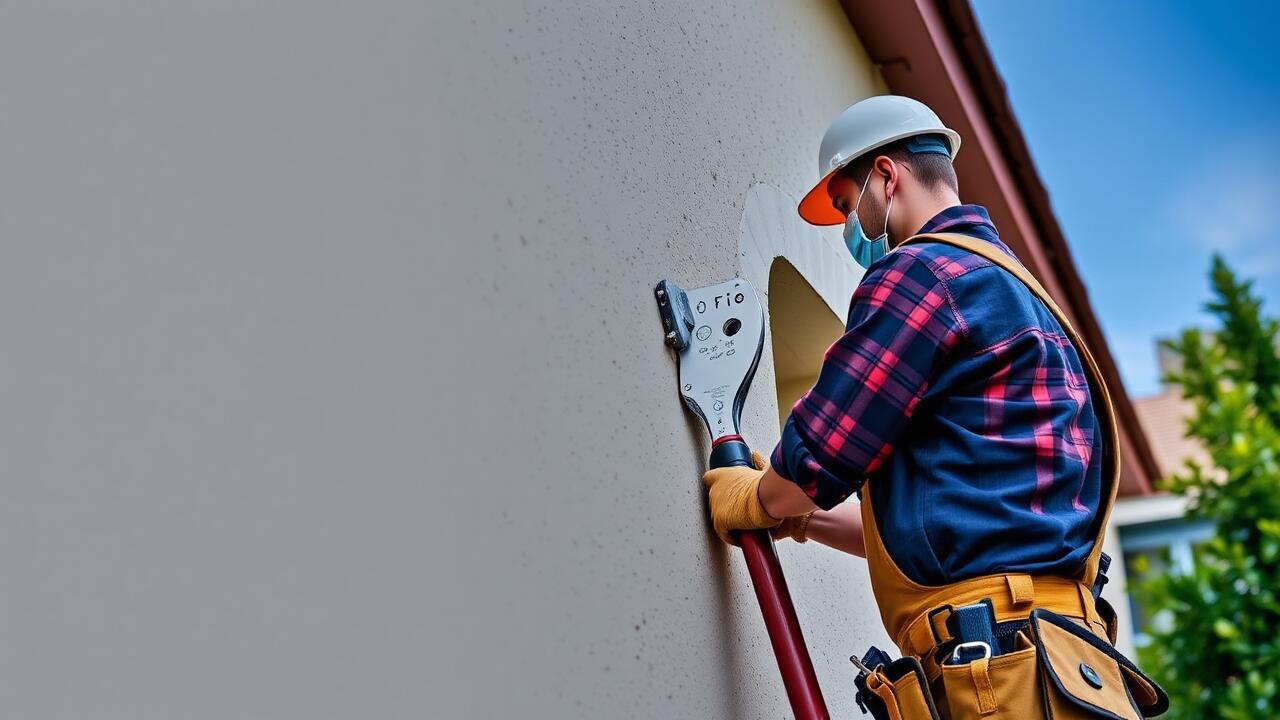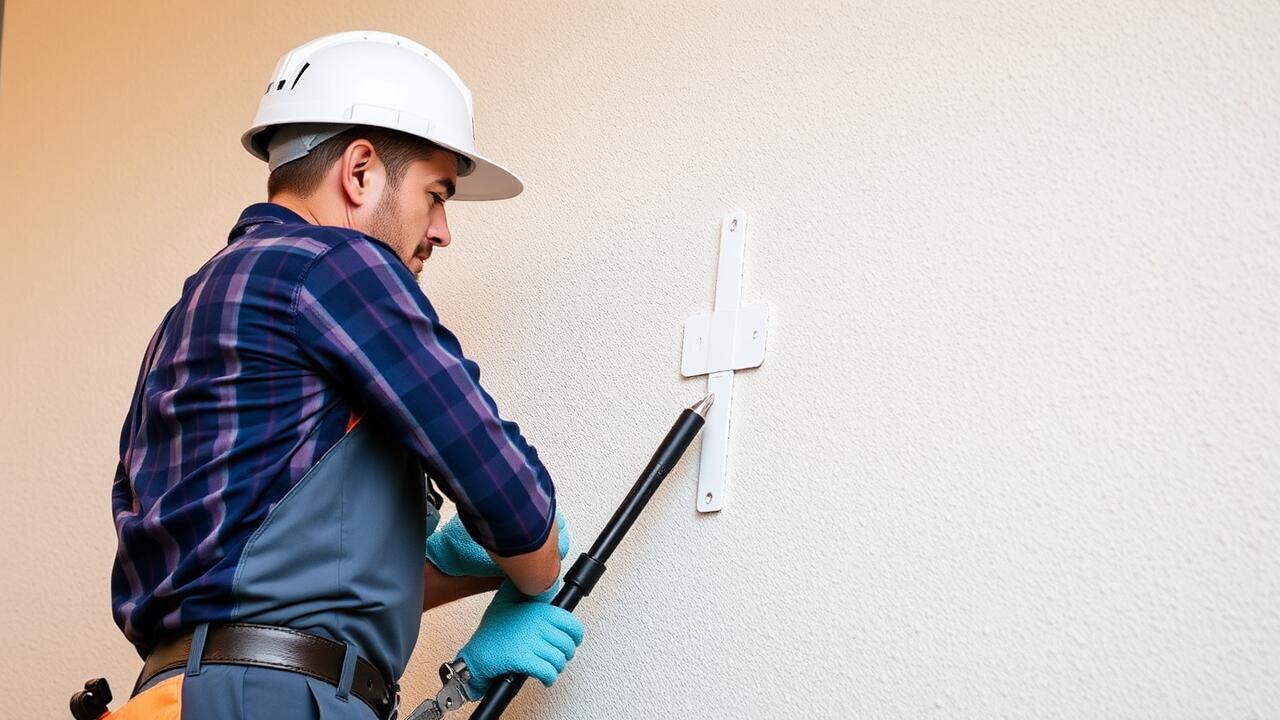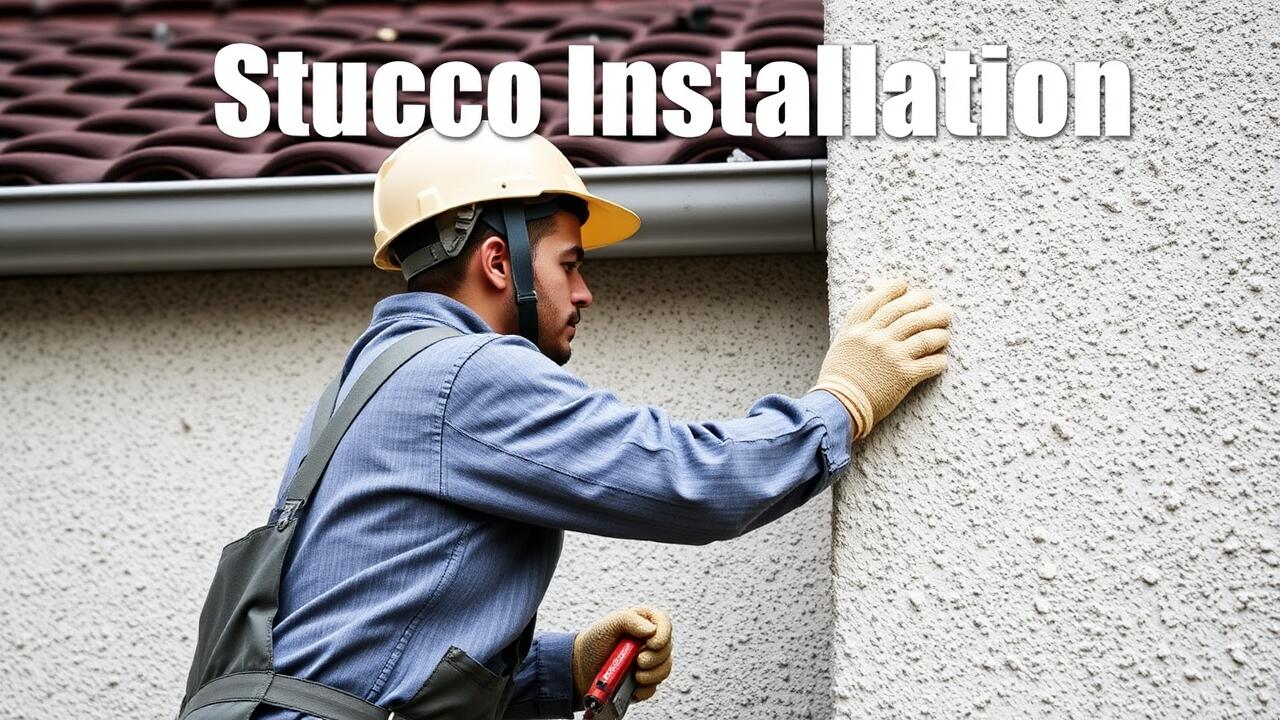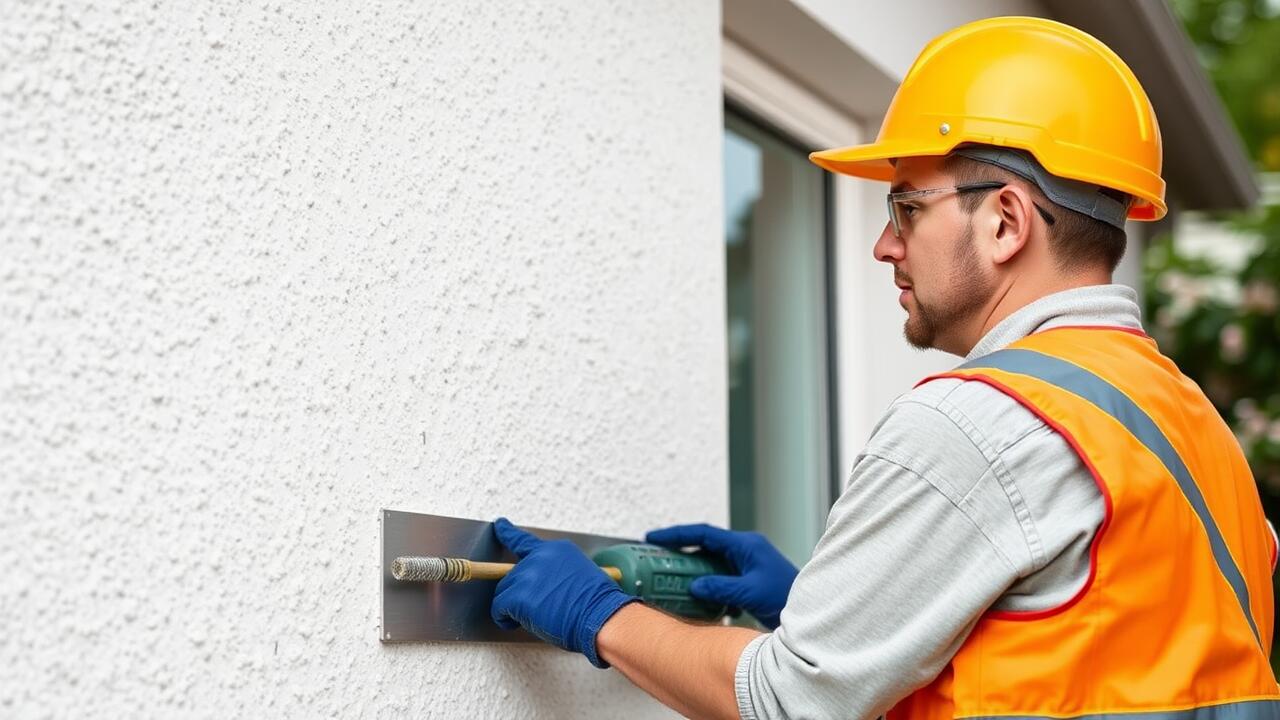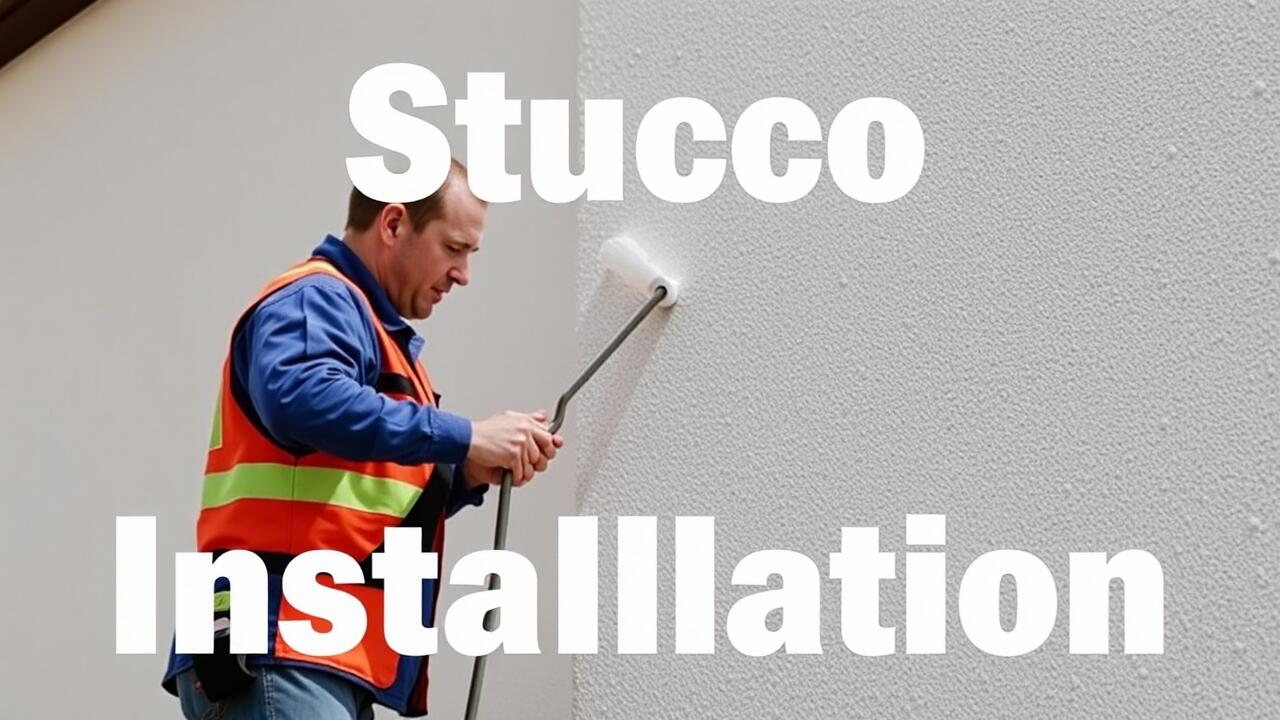
Installation Process
The installation process for Hardie Board typically begins with proper framing and moisture barrier placement. The boards are then cut to size and secured with nails or screws, ensuring they are leveled for a smooth finish. This method allows for quick installation compared to other siding options. A final protective layer, such as paint or stain, enhances durability and adds visual appeal.
On the other hand, Stucco Installation in Pacific Palisades, Los Angeles, involves a more intricate procedure. It usually requires a framework of metal lath, which is attached to the wall. The stucco mixture is then applied in multiple layers, each requiring time to cure before proceeding to the next. This process can be labor-intensive and time-consuming, often extending the completion timeline for a project.
Steps Involved in Installing Hardie Board and Stucco
Installing Hardie board involves several clear steps. First, the area must be properly prepared, including removing any old siding and ensuring the sheathing underneath is intact. Next, a moisture barrier is applied to protect against water intrusion. The Hardie boards are then cut to size and installed horizontally or vertically, depending on the desired aesthetic. Finally, the joints are sealed, and finish work is completed, giving the home a sleek, modern look.
On the other hand, stucco installation requires a different approach. The initial step involves creating a sturdy framework using metal lath or wire mesh to support the stucco. Following that, a scratch coat is applied, which needs to cure before additional layers are added. The subsequent two coats, a brown coat and a finish coat, provide insulation and texture. Homeowners looking for professional services often find options like "Stucco Installation in Chatsworth, Los Angeles" to meet their needs efficiently. Each method has its distinct processes, affecting not just installation times but also the overall cost and longevity of the exterior finish.
Cost Analysis
When evaluating the cost of Hardie board versus stucco, several factors come into play. The initial pricing for Hardie board can be higher due to the cost of materials and specific installation techniques required. On the other hand, stucco often presents as a more budget-friendly option, especially for larger projects. However, potential savings with stucco might be offset by repair and maintenance costs over time, particularly in regions with variable weather conditions.
For example, the expense of stucco installation in Downtown Los Angeles, Los Angeles, can vary significantly based on local labor costs and the intricacies of the project. Homeowners should also consider that while Hardie board may present a higher upfront investment, it tends to offer greater durability and less frequent replacement needs, which might save money in the long run. A thorough cost analysis enables homeowners to make informed decisions that suit both their immediate budget and long-term financial outlook.
Comparing the Financial Investment for Both Materials
When evaluating the financial investment for Hardie board and stucco, several factors come into play. Hardie board typically has a higher upfront cost compared to stucco. This reflects its durability and long-term maintenance benefits. Additionally, installation costs can vary based on local labor rates. Homeowners should consider how these costs align with the expected lifespan of the materials.
Stucco Installation in Chatsworth, Los Angeles, presents its own financial considerations. While the initial costs may be lower than Hardie board, stucco can require more maintenance over time to prevent issues such as cracking or water damage. Homeowners should also factor in the costs of repairs or repainting that might arise. Ultimately, understanding both the initial and ongoing costs is essential for making an informed decision.
Environmental Impact
The environmental impact of building materials is a significant consideration for many homeowners and builders. Hardie board, made from cement, sand, and cellulose fibers, is often promoted for its durability and resistance to various weather conditions. This material generally has a longer life cycle compared to traditional stucco, which can require more frequent repairs or replacement due to cracking and moisture issues. The manufacturing process of Hardie board involves a relatively low carbon footprint, contributing positively to sustainability efforts.
On the other hand, stucco presents its own set of environmental implications. The process of Stucco Installation in Downtown Los Angeles, Los Angeles, requires substantial energy and resources, particularly in terms of water usage. Additionally, while stucco can be a cost-effective choice, its longevity can be compromised by environmental factors like humidity and temperature fluctuations. This variability can lead to increased maintenance and replacement costs over time, ultimately affecting its overall environmental footprint.
Sustainability Factors Linked to Hardie Board and Stucco
When evaluating sustainability, Hardie Board often stands out due to its composition and longevity. Made from cellulose fibers, sand, and cement, it is sourced from recycled materials, making it a relatively eco-friendly choice. Its durability means fewer replacements over time, contributing to reduced waste. Additionally, Hardie Board is resistant to natural elements, which can minimize the need for maintenance and repair, further enhancing its sustainable profile.
On the other hand, stucco offers its own environmental advantages. Typically made from sand, cement, and lime, it often employs locally sourced materials, which can minimize transportation emissions. The energy efficiency of stucco contributes to lower heating and cooling costs for homes. However, when considering options like Stucco Installation in Encino, Los Angeles, homeowners should weigh these benefits against potential issues such as moisture retention and how they can impact the longevity and sustainability of the material.
FAQS
What is Hardie Board made of?
Hardie Board is made primarily from cement, sand, and cellulose fibers, giving it durability and resistance to various environmental conditions.
How does the installation process differ between Hardie Board and stucco?
Hardie Board installation involves fastening pre-cut panels to the wall frame with specific spacing, while stucco requires a multi-layer application process including lath, scratch coat, brown coat, and finish coat.
Which material is more cost-effective, Hardie Board or stucco?
While the initial costs for Hardie Board may be higher than stucco, its longevity and low maintenance can make it a more cost-effective choice over time.
How does the environmental impact of Hardie Board compare to stucco?
Hardie Board is often considered more environmentally friendly due to its durability and reduced need for replacements, while stucco has a lower carbon footprint during production but may require more maintenance.
Which material offers better insulation, Hardie Board or stucco?
Hardie Board, when installed with proper insulation, can provide better thermal performance compared to stucco, which typically has lower insulating properties unless combined with additional insulation layers.
